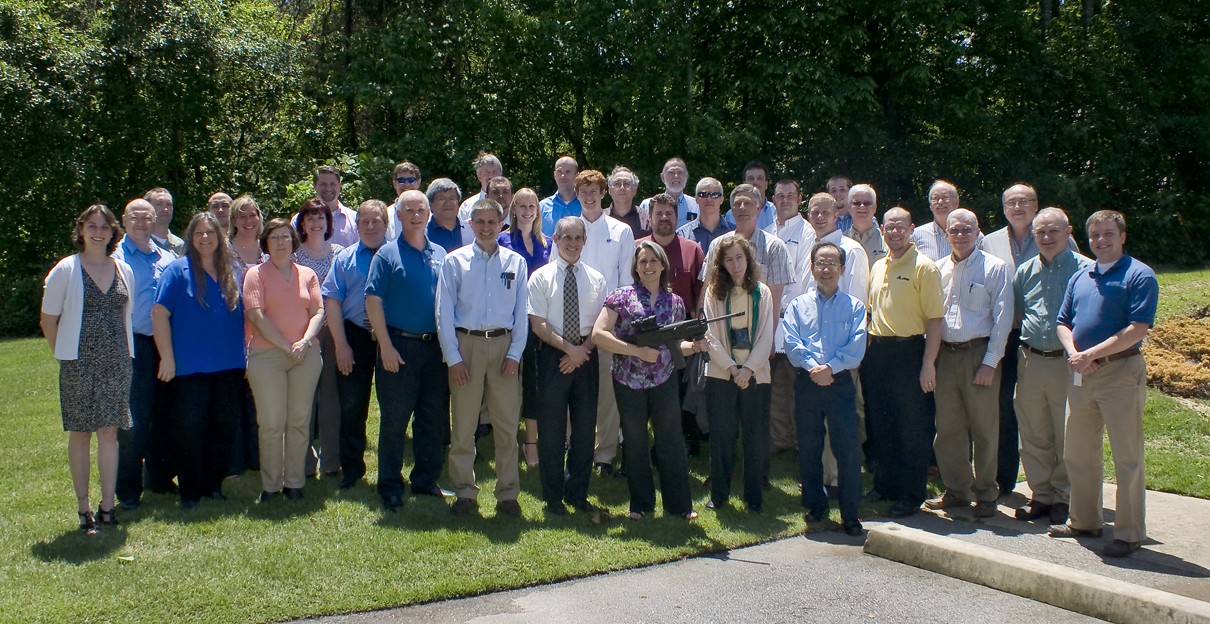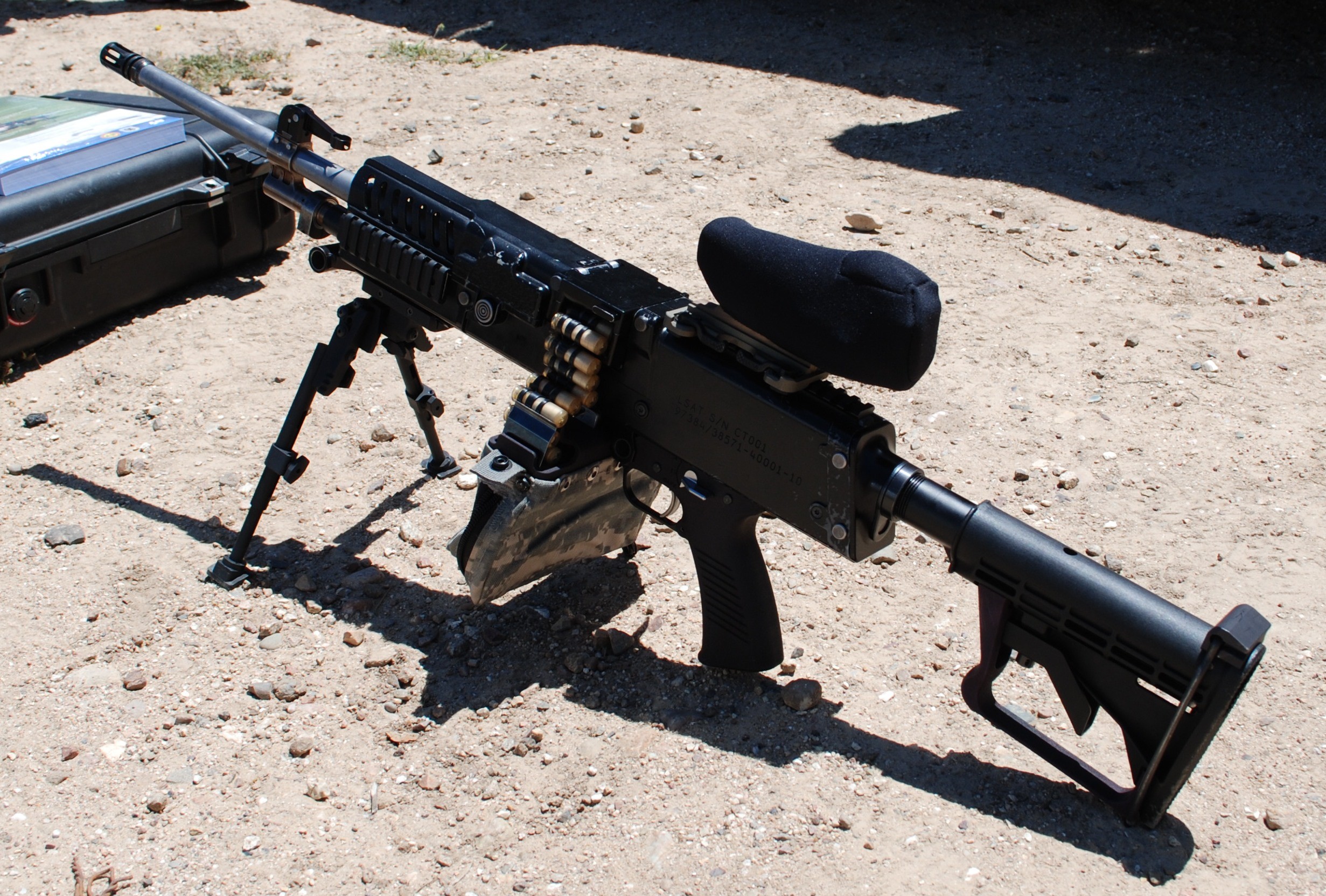In many ways, the weight of a Soldier's equipment can win or lose the fight.
Especially when considering the difficult terrains, high elevations and fast-paced operations that today's troops experience, the weight on their shoulders is critical.
That's why the Armament Research, Development and Engineering Center (ARDEC), headquartered at Picatinny Arsenal, N.J., is working to reduce by as much as 50 percent the weight of weapons and ammunition - two of the five heaviest items U.S. troops carry.
"We like to say that weight is the currency by which you buy capability," said Kori Phillips, a Systems Management Engineer in ARDEC's Joint Service Small Arms Program.
"The Army has been concerned about reducing Soldier load for years - this isn't a new problem. We've really put an emphasis on it with this project; there was a great motivation for reducing weight."
Light machine gun hits the range next summer
Phillips is the ARDEC Project Officer for the Lightweight Small Arms Technologies (LSAT) program, which has spent the last six years researching and developing a new light machine gun that may one day replace the M-249 Squad Automatic Weapon.
The key to this light machine gun is the 5.56mm cased telescoped ammunition that it fires. Instead of using a traditional brass shell, this new round features a thin plastic casing, reducing the weight by 42 percent.
"The cased telescoped ammo still provides the same muzzle velocity, range and accuracy as the brass-cased ammo," Phillips said. "We're not sacrificing lethality for weight; the plastic case does the same job."
Another benefit of the cased telescoped SAW is improved reliability, due to a rotating chamber design.
"It has a unique chamber design; the cartridge goes straight through from feed to eject," Phillips said. "With a regular SAW or M-16, the chamber and barrel is one piece. But in the LSAT SAW-variant, the chamber rotates back and forth. The system works in a circular pattern, so you're not interfering with your own system.
"We've avoided the common problem of failure to feed and failure to eject," she added. "In the current SAW system, that's where you primarily have failures and malfunctions."
Even the recoil works differently in the cased telescoped SAW. Phillips said she has received positive feedback about the ease of recoil from test shooters.
"You still have the same amount of recoil - but it's managed differently," she said. "The standard SAW has a sharp peak in recoil, but in this one, the recoil is spread out over a longer time, so it doesn't feel as sharp."
So far, the LSAT team has built three lightweight SAWs and has test-fired more than 10,000 rounds of cased telescoped ammunition. Contractors plan to build seven more guns and produce 100,000 more rounds in time for military utility assessment at Fort Benning, Ga., next summer. If all goes well, this system could eventually replace the current M-249.
Why not a lightweight rifle too'
With so much progress being made on the lightweight SAW, the LSAT team set out about a year and a half ago to apply the same concept to a rifle variant. Since this design is still in the early stages of development, the team has built only one rifle so far.
The weapon itself weighs the same as a standard M-4, but the real weight savings comes with the ammunition. This weapon is designed to use the same cased telescoped ammunition as the lightweight SAW, which reduces weight by 40 percent.
But in order to build a rifle that could use cased telescoped ammo, the LSAT team had to incorporate several changes in the chamber design - changes that actually benefit the system's performance.
"The lightweight rifle has a rising chamber instead of a rotating chamber," Phillips said. "It has a unique feed system because it feeds to the rear. And you actually gain four inches in the barrel length without changing the overall length of the weapon."
If all goes to plan, the LSAT team may incorporate a cased telescoped rifle in the summer 2011 military utility assessment at Fort Benning.
Ditch the case; save more weight
A much newer and more complex technology is also underway at LSAT, and this one promises to cut weapon and ammunition weight by 50 percent and reduce volume by 40 percent. They call it caseless telescoped ammunition, which is exactly what it sounds like - a bullet without a case.
Caseless telescoped ammo features a solid propellant body that burns off when the round is fired. Essentially, the case itself is the fuel.
Phillips calls it "the holy grail of weight reduction" - a seemingly fitting analogy, especially considering the team's quest to develop the right formula.
So far the project has posed many challenges and concerns, from environmental risks and temperature controls to manufacturing issues and cost efficiencies.
"There is so much more to consider when developing this ammunition," Phillips said. "We are redesigning it for cost purposes, but obviously our primary concerns are the ballistics, the reliability, and the repeatability."
The team has built one caseless telescoped weapon and shot about 500 caseless rounds with it, but they have since had to go back and make some minor changes to the design.
A joint-service effort
While the caseless ammo is still in the early stages of development, the Office of Naval Research is funding the majority of the project.
"It's a significantly smaller round of ammunition, so from a Marine's perspective, that's a big deal because of the way they travel," Phillips said.
But the Marines aren't the only ones to benefit. Since the LSAT program is managed by ARDEC's Joint Service Small Arms office, the development of these lightweight technologies is truly a joint effort.
"On a day-to-day basis, we are involved mostly with the Marines, the Army and Special Operations Command," Phillips said.
"We're an Office of the Secretary of Defense-chartered organization, so all services have a hand in the research and development process."








Social Sharing